-
 Bitcoin
Bitcoin $106,754.6083
1.33% -
 Ethereum
Ethereum $2,625.8249
3.80% -
 Tether USDt
Tether USDt $1.0001
-0.03% -
 XRP
XRP $2.1891
1.67% -
 BNB
BNB $654.5220
0.66% -
 Solana
Solana $156.9428
7.28% -
 USDC
USDC $0.9998
0.00% -
 Dogecoin
Dogecoin $0.1780
1.14% -
 TRON
TRON $0.2706
-0.16% -
 Cardano
Cardano $0.6470
2.77% -
 Hyperliquid
Hyperliquid $44.6467
10.24% -
 Sui
Sui $3.1128
3.86% -
 Bitcoin Cash
Bitcoin Cash $455.7646
3.00% -
 Chainlink
Chainlink $13.6858
4.08% -
 UNUS SED LEO
UNUS SED LEO $9.2682
0.21% -
 Avalanche
Avalanche $19.7433
3.79% -
 Stellar
Stellar $0.2616
1.64% -
 Toncoin
Toncoin $3.0222
2.19% -
 Shiba Inu
Shiba Inu $0.0...01220
1.49% -
 Hedera
Hedera $0.1580
2.75% -
 Litecoin
Litecoin $87.4964
2.29% -
 Polkadot
Polkadot $3.8958
3.05% -
 Ethena USDe
Ethena USDe $1.0000
-0.04% -
 Monero
Monero $317.2263
0.26% -
 Bitget Token
Bitget Token $4.5985
1.68% -
 Dai
Dai $0.9999
0.00% -
 Pepe
Pepe $0.0...01140
2.44% -
 Uniswap
Uniswap $7.6065
5.29% -
 Pi
Pi $0.6042
-2.00% -
 Aave
Aave $289.6343
6.02%
Is it necessary to clear the position after the high-level sideways consolidation and chooses to break downward?
A high-level sideways consolidation in crypto often precedes a major breakout, and a breakdown below support typically signals bearish momentum, prompting traders to reassess or close long positions.
Jun 18, 2025 at 04:50 am
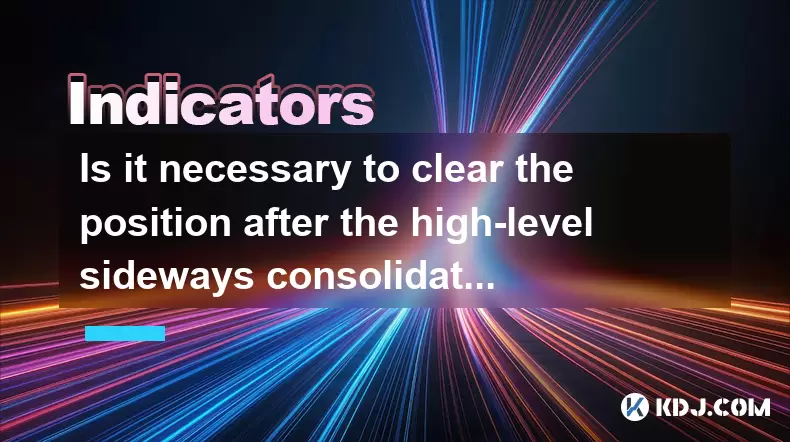
Understanding High-Level Sideways Consolidation in Cryptocurrency Trading
In the context of cryptocurrency trading, high-level sideways consolidation refers to a period where the price of an asset remains within a tight range after reaching a significant high. This phase is often marked by low volatility and balanced buying and selling pressure. Traders closely monitor such patterns because they can precede major directional moves, either upward or downward.
During this consolidation phase, traders may observe tightening price ranges, reduced volume, and indecisive candlestick formations. These signals suggest that the market is in a state of equilibrium, with neither bulls nor bears taking control. However, the eventual breakout direction becomes crucial for position management decisions.
What Happens When the Price Breaks Down After Consolidation?
When the price breaks below the support level formed during the consolidation phase, it typically indicates bearish momentum taking over. This breakdown can trigger panic among long-position holders and attract short sellers into the market. The psychological impact of breaking below a key support level cannot be overstated — it often leads to further selling pressure.
From a technical standpoint, a confirmed breakdown should ideally come with increased trading volume, which adds credibility to the move. In many cases, especially in crypto markets known for their volatility, the drop following a breakdown can be steep and rapid. This makes it critical for traders to assess whether they should hold, adjust, or fully exit their positions.
Why Consider Closing Positions After a Downward Breakout?
There are several compelling reasons why a trader might consider closing all or part of their long positions after a downward breakout from a high-level consolidation zone:
- A breakdown often marks the end of a bullish trend, suggesting that the risk-reward balance has shifted.
- Continuing to hold long positions in a deteriorating trend increases exposure to potential losses.
- Psychological resistance levels that previously acted as support now become areas of likely retest failure.
- Historical data from similar chart patterns shows that breakouts tend to continue in the direction of the breakout until significant new support levels are found.
Traders who ignore these signs may find themselves trapped in a prolonged downtrend with limited opportunities for recovery unless proactive measures are taken.
How to Determine Whether to Fully Close or Partially Hedge Your Position
Deciding whether to completely exit a trade or partially hedge involves analyzing multiple factors beyond just price action. Here’s how traders approach this decision-making process:
- Technical indicators like RSI (Relative Strength Index), MACD (Moving Average Convergence Divergence), and volume profiles help determine the strength of the breakdown.
- Fibonacci retracement levels drawn from the previous rally can highlight potential areas where the price might stabilize or accelerate.
- Monitoring order book depth and liquidity levels helps identify whether the breakdown is driven by real selling pressure or manipulative tactics.
- If there's strong institutional selling visible on order books, it may justify exiting the entire position immediately.
- Alternatively, traders may choose to scale out of positions gradually, locking in partial profits while leaving some exposure open in case of a false breakout.
This nuanced approach allows traders to remain flexible without being overly aggressive or overly cautious.
Case Studies: Real Examples from Crypto Markets
Looking at past instances in the crypto market provides valuable insight into how traders have handled similar scenarios:
- During Bitcoin’s 2021 bull run, it reached $64,000 before entering a high-level consolidation phase between $58,000 and $64,000. When it eventually broke down below $58,000, the price dropped rapidly to $30,000 within weeks. Traders who exited early minimized losses significantly.
- Ethereum experienced a similar pattern in late 2021, consolidating around $4,000 before breaking down sharply. Those who failed to close positions faced steep drawdowns as the price fell below $2,000.
- In altcoin markets, tokens like Solana and Cardano also exhibited consolidation phases followed by sharp breakdowns, reinforcing the importance of timely exits when key support levels fail.
These examples underscore the value of recognizing consolidation patterns and reacting swiftly once a breakdown occurs.
Frequently Asked Questions
Q: Should I close my position immediately upon seeing a breakdown, or wait for confirmation?
A: It depends on your risk tolerance and strategy. Some traders prefer to act on the initial breakdown candle, while others wait for confirmation through subsequent candles closing below the support level. Using volume analysis and momentum indicators can help confirm the validity of the breakdown.
Q: Can a breakdown from a consolidation area be a buying opportunity instead of a reason to sell?
A: Yes, in some cases, breakdowns can lead to oversold conditions that attract contrarian buyers. However, entering on a breakdown requires careful assessment of support zones, historical bounce behavior, and reversal candlesticks before considering any counter-trend entry.
Q: How do I differentiate between a real breakdown and a fakeout?
A: Fakeouts occur when the price briefly breaks a key level only to reverse quickly. To avoid falling into this trap, look for strong follow-through volume, sustained closes beyond the support level, and alignment with broader market sentiment. Avoid making impulsive decisions based solely on price crossing a level momentarily.
Q: What tools can help me track consolidation and breakdowns more effectively?
A: Utilizing platforms like TradingView, Binance Smart Trader tools, or Bybit's advanced charting features can help visualize consolidation zones clearly. Adding alerts for key support/resistance levels and integrating volume profile overlays enhances the ability to detect genuine breakdowns.
Disclaimer:info@kdj.com
The information provided is not trading advice. kdj.com does not assume any responsibility for any investments made based on the information provided in this article. Cryptocurrencies are highly volatile and it is highly recommended that you invest with caution after thorough research!
If you believe that the content used on this website infringes your copyright, please contact us immediately (info@kdj.com) and we will delete it promptly.
- Pi Network, KYC Sync, and Pi2Day: A Deep Dive into the Latest Developments
- 2025-06-20 18:45:13
- Ethereum, Bitcoin, and the Price Prediction Game: What's Hot Now?
- 2025-06-20 18:25:13
- Bitcoin Price Breakout Imminent? Decoding the Crypto Market's Next Big Move
- 2025-06-20 18:45:13
- Cracking the Cross-Chain Code: Interoperability and Web3 UX
- 2025-06-20 18:25:13
- Blockchain, P2P Games, and Marketplaces: A New Era of On-Chain Economies
- 2025-06-20 18:57:14
- Arizona's Bitcoin Reserve Bill: Senate Vote Revives Crypto Debate
- 2025-06-20 18:57:14
Related knowledge
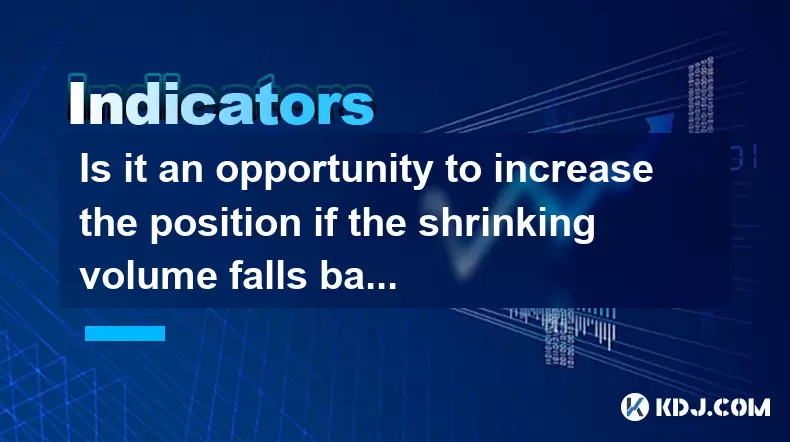
Is it an opportunity to increase the position if the shrinking volume falls back to the rising trend line?
Jun 20,2025 at 06:22pm
Understanding the Shrinking Volume in Cryptocurrency TradingIn cryptocurrency trading, volume is one of the most critical indicators used to confirm price movements and trends. When traders observe a scenario where volume shrinks during a pullback, it can signal either a lack of selling pressure or an imminent reversal. This phenomenon often occurs when...
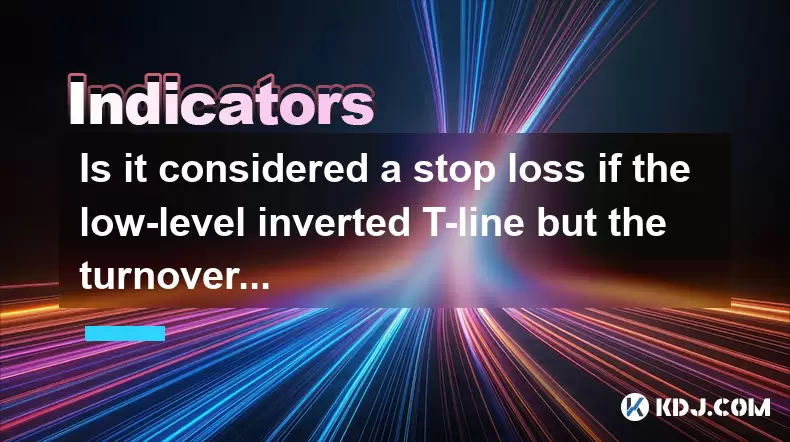
Is it considered a stop loss if the low-level inverted T-line but the turnover rate is extremely low?
Jun 20,2025 at 04:49pm
Understanding the Low-Level Inverted T-Line in Cryptocurrency ChartsIn technical analysis within the cryptocurrency market, candlestick patterns are crucial indicators for traders to predict potential price movements. The low-level inverted T-line is a specific type of candlestick pattern that often raises questions among traders. This pattern typically...
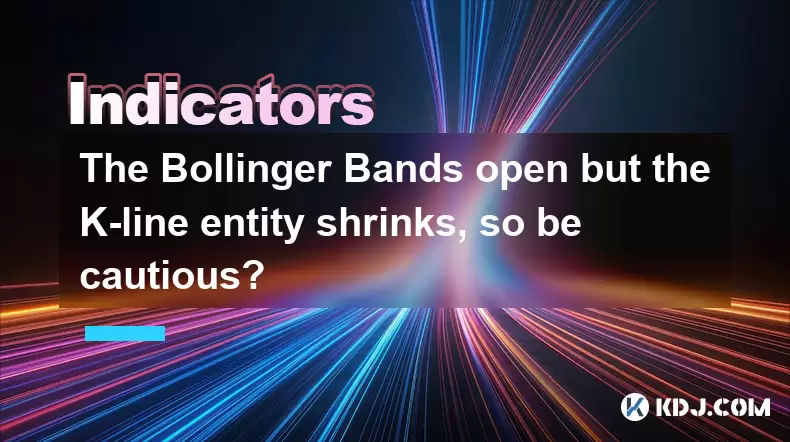
The Bollinger Bands open but the K-line entity shrinks, so be cautious?
Jun 20,2025 at 06:08pm
Understanding the Bollinger Bands and K-Line RelationshipBollinger Bands are a popular technical analysis tool used in cryptocurrency trading. They consist of a moving average (usually 20-period) with two standard deviation lines plotted above and below it. These bands dynamically adjust to price volatility, expanding when volatility increases and contr...
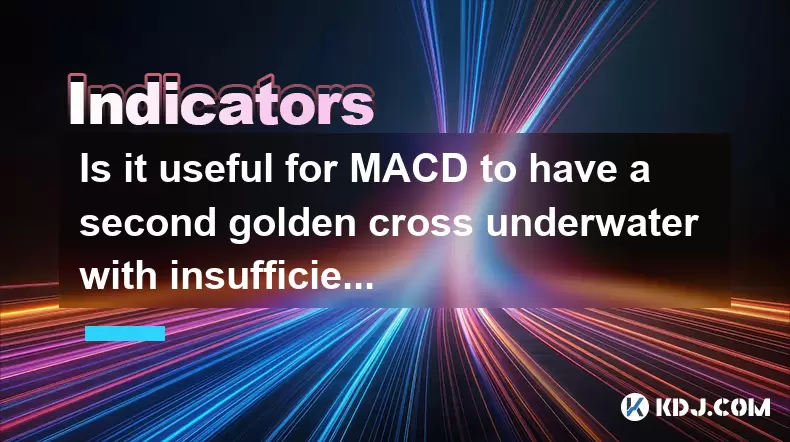
Is it useful for MACD to have a second golden cross underwater with insufficient volume?
Jun 20,2025 at 06:49pm
Understanding the MACD and Its Golden CrossThe Moving Average Convergence Divergence (MACD) is a popular technical analysis tool used by traders to identify potential buy or sell signals. It consists of three components: the MACD line, the signal line, and the histogram. The golden cross occurs when the MACD line crosses above the signal line, often see...
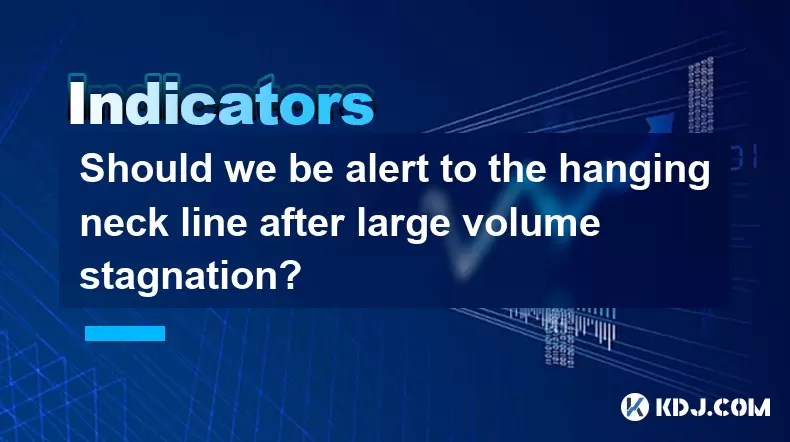
Should we be alert to the hanging neck line after large volume stagnation?
Jun 20,2025 at 07:01pm
Understanding the Hanging Neck Line in Cryptocurrency TradingThe hanging neck line is a technical analysis pattern that often appears on candlestick charts and is considered a bearish reversal signal. In the context of cryptocurrency trading, recognizing this formation can be crucial for traders looking to avoid potential price drops after a period of u...

Is it a real drop when KDJ crosses but the trading volume shrinks?
Jun 20,2025 at 03:49pm
Understanding KDJ and Its Role in Cryptocurrency TradingIn the realm of cryptocurrency trading, technical analysis plays a crucial role in identifying potential price movements. The KDJ indicator, also known as the stochastic oscillator with a J line added for momentum confirmation, is widely used by traders to gauge overbought or oversold conditions. I...

Is it an opportunity to increase the position if the shrinking volume falls back to the rising trend line?
Jun 20,2025 at 06:22pm
Understanding the Shrinking Volume in Cryptocurrency TradingIn cryptocurrency trading, volume is one of the most critical indicators used to confirm price movements and trends. When traders observe a scenario where volume shrinks during a pullback, it can signal either a lack of selling pressure or an imminent reversal. This phenomenon often occurs when...

Is it considered a stop loss if the low-level inverted T-line but the turnover rate is extremely low?
Jun 20,2025 at 04:49pm
Understanding the Low-Level Inverted T-Line in Cryptocurrency ChartsIn technical analysis within the cryptocurrency market, candlestick patterns are crucial indicators for traders to predict potential price movements. The low-level inverted T-line is a specific type of candlestick pattern that often raises questions among traders. This pattern typically...

The Bollinger Bands open but the K-line entity shrinks, so be cautious?
Jun 20,2025 at 06:08pm
Understanding the Bollinger Bands and K-Line RelationshipBollinger Bands are a popular technical analysis tool used in cryptocurrency trading. They consist of a moving average (usually 20-period) with two standard deviation lines plotted above and below it. These bands dynamically adjust to price volatility, expanding when volatility increases and contr...

Is it useful for MACD to have a second golden cross underwater with insufficient volume?
Jun 20,2025 at 06:49pm
Understanding the MACD and Its Golden CrossThe Moving Average Convergence Divergence (MACD) is a popular technical analysis tool used by traders to identify potential buy or sell signals. It consists of three components: the MACD line, the signal line, and the histogram. The golden cross occurs when the MACD line crosses above the signal line, often see...

Should we be alert to the hanging neck line after large volume stagnation?
Jun 20,2025 at 07:01pm
Understanding the Hanging Neck Line in Cryptocurrency TradingThe hanging neck line is a technical analysis pattern that often appears on candlestick charts and is considered a bearish reversal signal. In the context of cryptocurrency trading, recognizing this formation can be crucial for traders looking to avoid potential price drops after a period of u...

Is it a real drop when KDJ crosses but the trading volume shrinks?
Jun 20,2025 at 03:49pm
Understanding KDJ and Its Role in Cryptocurrency TradingIn the realm of cryptocurrency trading, technical analysis plays a crucial role in identifying potential price movements. The KDJ indicator, also known as the stochastic oscillator with a J line added for momentum confirmation, is widely used by traders to gauge overbought or oversold conditions. I...
See all articles

























































































